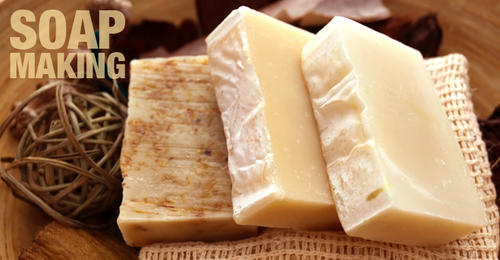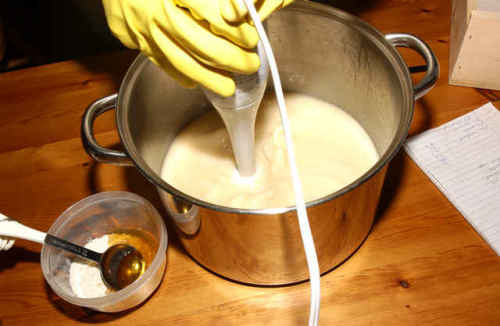Soap making is catching on as quite the DIY fad. Those who make their very own soap will tell you that homemade soap feels better, smells better and in general has more character to it, compared to commercially manufactured soap. So here's a handy guide to making your own soap. Soap Making Supplies 1 kg vegetable shortening 0.7 litres coconut oil 0.7 litres olive oil |  |
 | 340 gm caustic soda (AKA lye) 0.9 litres distilled water 100 ml essential oil of your choice (rose, eucalyptus, and lemon are favourites) Note: Ensure that all ingredients are precise. Soap Making Equipment You need heavy duty gloves and goggles for protection. You also need a weighing scale, a stainless steel pot, large glass container, measuring cups, wooden spoons, two thermometers, plastic soap moulds, and cleaning supplies like paper or cloth towels. |
Making Home Made Soap, Step-by-Step
| |
| Making soap at home can be a fun activity. Not only do you save a fair amount of money over time, you know your soap has gentle ingredients, unlike the ones you buy from the store that are chockfull of harsh chemicals. | |